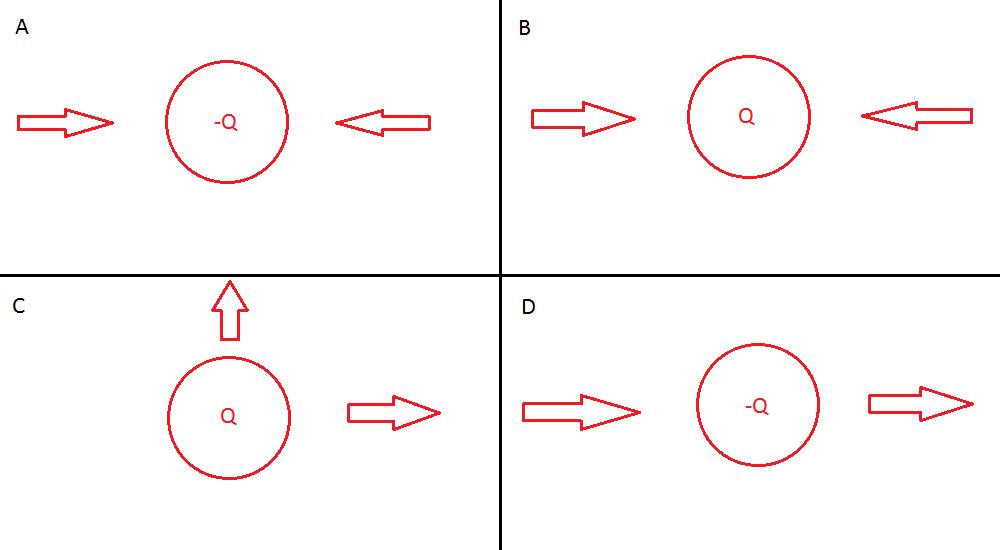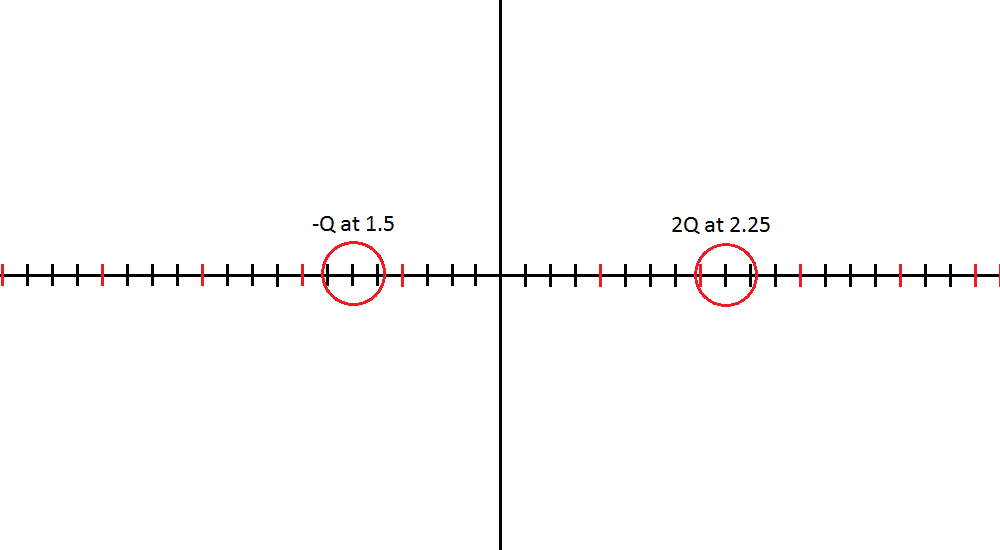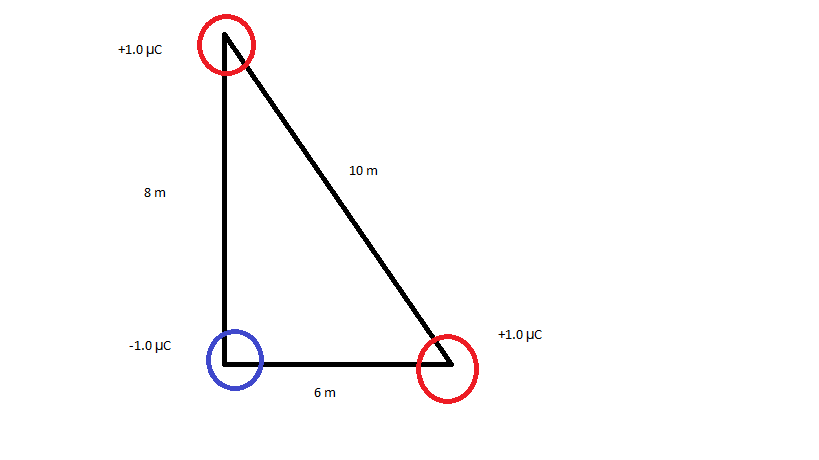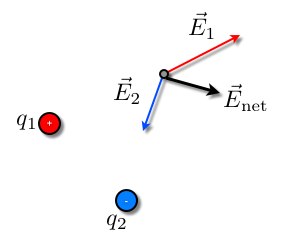Electric Field: Difference between revisions
Wsheppard30 (talk | contribs) (VPython section) |
Wsheppard30 (talk | contribs) |
||
| Line 82: | Line 82: | ||
==VPython== | ==VPython== | ||
An arrow can be coded to represent the electric field at a point in VPython by using the formula for the electric field at a point. | |||
[[File: | |||
==Connectedness== | ==Connectedness== | ||
Revision as of 22:24, 25 November 2018
CLAIMED BY JAY SHAH PHYS 2212 3/13/2016 EDITED BY YASMIN MARTINS 10/31/2016
EDIT CLAIMED BY QUINTIN MURPHY 4/8/2017 EDIT BY KEVIN RUDDY 4/9/2017 Hey Kevin I am still editing this, please do not update. -Quintin.
EDIT BY JUSTYN BAKER 4/18/2018
EDIT BY WILLIAM SHEPPARD 11/13/2018 - FALL 2018
The Main Idea
The main idea of this page is to develop an understanding of electric fields and the types of particles that produce electric fields.
History
Electric fields are created by electric charges. The original discovery of the electric charge is not explicitly known, but in 1675 the esteemed chemist Robert Boyle, known for Boyle's Law, discovered the attraction and repulsion of certain particles in a vacuum. Almost 100 years later in the 18th century the American Benjamin Franklin first coined the phrases positive and negative (later developed into proton and electron) for these particles with attractive and repulsive properties. Finally, in the 19th century Michael Faraday utilized his electrolysis process to discover the discrete nature of electric charge.
Electric Field
Electric Field is a field created by an electric charge. It is measured in units of newtons per coulomb (N/C), the proper units of which are (kg*(m/s^2)), and has a direction, making it a vector quantity. Electric fields can also be in the units of volts per meter (V/m). The electric field created by a charge exists at all points in space and exerts a force on other charged objects. The field can be drawn as an arrow with tail at the observation location pointing in the direction of the field. The Electric field obeys superposition, so the net Electric field at a point in space can be determined by summing all the individual fields present at that location.
The electric field of a positive particle points away from the particle, while the electric field of a negative particle points toward the particle, as seen right here:

When two oppositely charged particles are placed next to each other, their electric field moves from the positive to the negative. Two similarly charged particles will have fields that are repelled by each other. This is shown below:
The two oppositely charged particles, when in very close proximity, will act together in the form of a dipole.
Mathematical Concept of a Field
In mathematics, a field is a value that exists at all points in space. The magnitude of an electric field is a scalar. The field itself is represented as a vector: <x,y,z>. Other examples of fields are gravitational fields and magnetic fields.
You can calculate electric field in a few ways. You can calculate the electric field vector and magnitude by using the following equations:
[math]\displaystyle{ E = \frac{F}{q} }[/math], where F is the force and q is the charge of the particle. This formula is very helpful to think about to understand the relation between force and electric field.
[math]\displaystyle{ E = \frac{kQ}{r^2} }[/math], where k is Coulomb's constant, or 9x10^9, Q is the charge of the particle, and r is the distance between both particles.
The magnitude of an electric field can be also be calculated by using the potential difference, Δϕ, between two plates and the distance, d, between them.
- [math]\displaystyle{ E = -\frac{\Delta\phi}{d} }[/math]
Electric Field and Force
The force due to an external electric field on a charged particle is given by the equation [math]\displaystyle{ \vec{F} = q\vec{E} }[/math] where q is the charge of the observed particle and E is the electric field. The field created by a charged particle exerts no force on itself. This is to say that the force on a given particle is defined as the charge on that particle multiplied the combined electric fields of the external environment. Since force is measured in Newtons (N) and charge in Coulombs (C), Electric field is measured in Newtons per Coulomb (N/C) as mentioned earlier. Furthermore, the magnitude of an electric field is not dependent on the sign of q (i.e. whether the charge is positive or negative.) The sign only helps determine the direction that the electric field points.
To calculate the electric force on a particle, first you must calculate the electric fields affecting the particle. Applying superposition, you add all electric fields to find the net field. Once you have this, you multiply the electric field by the charge of the particle, and this gives you the force exerted on the particle. Like charges repel each other and opposite charges attract each other.
Electric Field and Superposition
The electric field contributed by a charged particle is unaffected by the electric field contributed by other charged particles. To that end, the principle of superposition, as mentioned earlier, states that the net electric field at a location is determined by the sum of all individual electric fields on charged particles. The principle of superposition is very useful to determine the force on a given charged particle. By being able to define electric field as a vector and simply adding up the various components of individual electric fields, the force on a particle is easily calculated using [math]\displaystyle{ \vec{F} = q\vec{E} }[/math]
The two must common methods of combining vectors in the principle of superposition are the tail to tail method (number 1 in the image below) and head to tail (number 2 in the image below).
Electric Field and Electric Potential
Another way to define electric field is using the electric potential over a certain distance to determine field. Electric potential is referred to as electric field potential or electrostatic potential. In this case, Electric field is shown in units volts (V) per meter (m) (V/m). Again, electric field is calculated with potential difference with the equation: [math]\displaystyle{ E = -\frac{\Delta\phi}{d} }[/math]
Examples
Simple
Select all of the arrows that accurately show the electric field produced by the charge shown. (only direction not magnitude)
 We know that the electric field from a single point charge will always point outwards if it is positive and always inwards if it is negative. This means that A and C are both correct. It is also important to remember that opposites will attract. In this case a negative and positive charge will attract to one another in any orientation. It is also important to remember that oppositely charged particles will repel each other, so any negative-negative or positive-positive interaction will result in a repelling force.
We know that the electric field from a single point charge will always point outwards if it is positive and always inwards if it is negative. This means that A and C are both correct. It is also important to remember that opposites will attract. In this case a negative and positive charge will attract to one another in any orientation. It is also important to remember that oppositely charged particles will repel each other, so any negative-negative or positive-positive interaction will result in a repelling force.
Middling
What is the magnitude and direction of the electric field at the origin (assume Q = 1 coulomb)?

There is a positive charge on the right with an electric field pointing to the left at the origin. The negative charge on the left also has an electric field pointing to the left at the origin so we will add the two electric fields as they point along the negative x axis. [math]\displaystyle{ \frac{k}{1.5^2}+\frac{k*2}{2.25^2} = 0.75*10^{10} }[/math]. This is a similar mathematical representation to the image in electric field and superposition section of this page. The force of the positive and negative charges are both acting on the specific reference point and have a total Enet value that is the combination of the two opposite forces. The Enet in this scenario is the 0.75*10^{10} </math> value that was calculated in the +x direction.
Difficult
What is the magnitude of the electric field experienced by the positive particle at the top of the triangle?

The first step is to find the angle measure of the angle that is opposite of the 8 meter side of the triangle. To do this you must use inverse cosine to find the angle measure. Then we have to find the electric field caused by the other two particles at the point we are analyzing. We need to split the electric field at the point to its x- and y- components. The magnitude of the electric field caused by the positive particle is the following: E= ((9×〖10〗^9)(1×〖10〗^(-6)))/100=90. The negative particle has the following magnitude: E= ((9×〖10〗^9)(1×〖10〗^(-6)))/64=140.63.No we look at the x- component of the electric field. The negative particle does not create a electric field in the x-direction at the observation location. The positive particle has an electric field of cos(53.13) times the magnitude of the electric field. The electric field in the y-direction is the magnitude of the negative particle and sin(53.13) times the magnitude of the positive particle. The vector for the electric field at the point is as follows: (-54,-68.63). Now we have to find the magnitude of this vector to find the magnitude of the electric field at the observation location. The magnitude is 87.33 N/C.
VPython
An arrow can be coded to represent the electric field at a point in VPython by using the formula for the electric field at a point. [[File:
Connectedness
The ability to understand electric fields helps set the basis for the introduction of Electric Force (as we discussed [math]\displaystyle{ \vec{F} = q\vec{E} }[/math] ). The introduction of electric force will attach the specific charge of the particles with the electric field that they produce, resulting in the electric force. Electric force will lay the ground work for understanding the force that particles have in different systems and environments, and eventually lead to the introduction of Magnetic Force.
See also
The understanding of electric fields is a doorway into all the various fields only some of which will be covered in physics 2212. The fundamental understanding of electric fields will prove to be very important further along when magnetic fields are introduced as they share many qualities. The understanding of electric and magnetic fields will be used throughout the semester to learn about various electromagnetic concepts, and ultimately a understanding and application of Maxwell's Equations. Please see related topics:
External links
A youtube playlist that does a great job going step by step and reviewing topics
Further review on electric field lines.
References
This section contains the the references you used while writing this page


